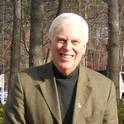Cellular transforming genes (c-onc) are evolutionarily conserved vertebrate DNA segments which have been identified by two different approaches. One group of these cellular genes has been defined by their close homology to the transforming genes of the acute transforming retroviruses (v-onc). The second group, which represent activated forms of normal cellular genes, has been detected by the ability of certain genes from animal and human tumours to induce focal transformation of tissue culture cells. Investigation of the possibility that the same cellular gene might have given rise to both a retroviral and a tumour transforming gene revealed that two of the c-onc genes identified by transfecting genomic DNA from human tumours to murine 3T3 fibroblasts were related to the transforming genes of two closely related acute transforming retroviruses, Harvey murine sarcoma virus (HaMuSV) and Kirsten murine sarcoma virus (KiMuSV). The transforming genes of HaMuSV and KiMuSV are derived from two members of a cellular onc gene family called ras, which is a rather divergent group of normal vertebrate genes originally found by analysis of the cellular homologues of the v-onc genes of HaMuSV and KiMuSV. Four distinct human cellular homologues of v-Ha-ras and v-Ki-ras (designated c-Ha-ras and c-Ki-ras, respectively) have been characterized; two (c-Ha-ras-1 and c-Ha-ras-2) are more closely related to v-Ha-ras, while the others (c-Ki-ras-1 and c-Ki-ras-2) are more closely related to v-Ki-ras. On ligation with a retroviral long terminal repeat, the c-Ha-ras-1 gene of both rat and human have been shown to induce in vitro transformation of mouse NIH 3T3 cells by DNA transfection. This gene and c-Ki-ras-2 have also been isolated as activated transforming genes in human tumours. An understanding of the genetic relationship of the c-ras genes and additional genetic loci possibly involved in neoplastic transformation would be greatly facilitated by placement of the ras genes on the human chromosome map. Using DNA analysis of rodent×human somatic cell hybrids, we have now assigned each of the human genes to a different chromosome.
Available at: http://works.bepress.com/stephen-obrien/190/

©1983 Nature Publishing Group